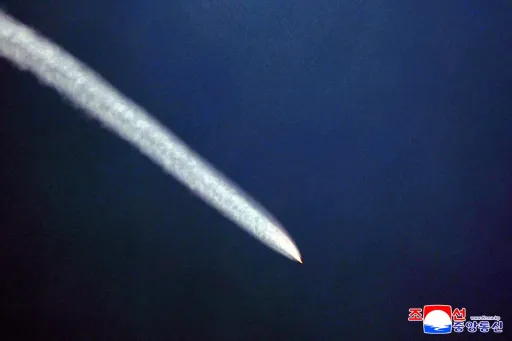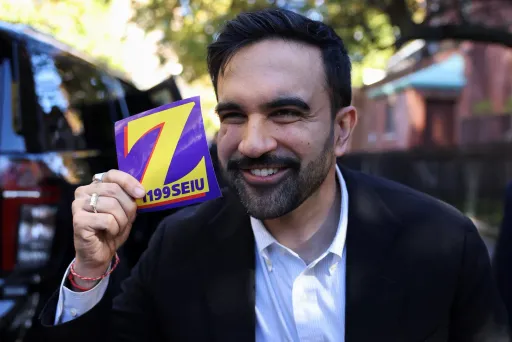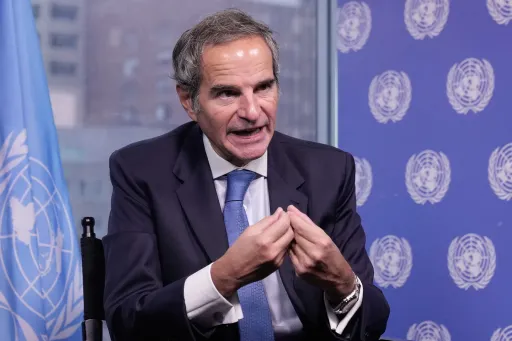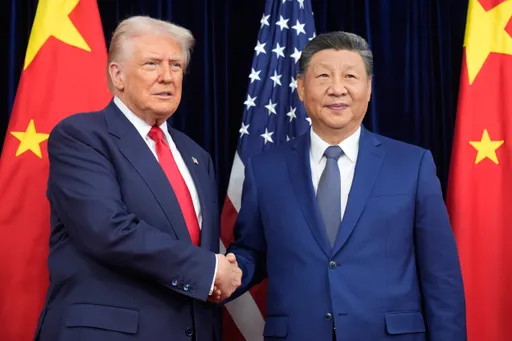By Nadim Siraj
Former US attorney general Ramsey Clark once made a timeless observation about America’s role in world politics: “The greatest crime since World War II has been US foreign policy.”
The truthful statement resonates like never before with the world struggling to come to terms with Donald Trump’s outrageous plot to take over Gaza.
The unpredictable US President surpassed himself when he recently unleashed an atrocious plan that shattered all limits of diplomacy and decency. He proposed the US would take control of war-ravaged Gaza, steer the 2.1 million Palestinians out, and develop it into a “Riviera of the Middle East”.
US Secretary of State Marco Rubio and White House press secretary Karoline Leavitt made feeble firefighting efforts by assuring that it is a temporary plan and there would be no boots on the ground.
But their president brushed the politeness aside, re-asserting that the US “will have Gaza” for sure. “We're going to take it, we're going to hold it, we're going to cherish it,” he told reporters in the Oval Office.
‘Shocking’, ‘stunning’, ‘unexpected’, ‘unprecedented’ – these are some of the adjectives being used in debates to describe Trump’s impractical plan.
But if one takes a couple of steps back and looks at the larger picture, the Gaza scheme doesn’t really seem surprising.
Hardly surprising
In fact, a close look at the long and disturbing history of US foreign policy shows the contrary – that Trump’s Gaza gambit is actually a continuation of America’s long-term interventionist and expansionist agenda.
Gaza is only an incremental plot in America’s perpetual imperialist mission to meddle, intervene, invade, wage wars, and seize territory in violation of diplomatic decorum.
Recall that during Trump’s presidential campaign build-up and his subsequent election win, Gaza wasn’t a one-off target. He had been shouting out that he wanted the US to absorb or buy Canada and Greenland, and seize the Panama Canal.
Even the tranquil waters around the US aren’t safe from Trump’s geopolitical overreach. The White House recently made Google Maps rename the Gulf of Mexico as ‘Gulf of America’ for domestic users.
A long, dark history
History shows that Trump is only the latest commander-in-chief of a seasoned US imperialist empire that has lumbered from one territorial intervention to another since the start of the 19th century.
According to data from the watchdog World Population Review, the US military invaded as many as 68 countries between 1812 and 2024.
Soon after America’s independence in 1776, the octopus of US imperialism has been spreading its tentacles across continents – fighting official and proxy wars, running overt and covert meddling operations, and grabbing territory.
The history of US aggression and foreign policy has been comprehensively documented in a 2014 book aptly titled, ‘America Invades: How We've Invaded or Been Militarily Involved with Almost Every Country on Earth’.
According to the book, out of the 194 UN-recognised nations, the US has invaded at least 84 of them and has been militarily engaged with 191 – that leaves out just three countries: Andorra, Bhutan, and Liechtenstein.
Let alone what transpired in the 19th century, even recent history – post-World War II – is scarred by brutal US wars and interventions that have left a trail of human rights violations, boots on the ground, and territorial takeovers.
Recent scars
Here’s an interesting walkthrough of a few infamous US foreign policy misadventures since the end of World War II in 1945.
In 1953, the US deployed the CIA in Iran to orchestrate a coup against the democratically elected government of PM Mohammad Mossadegh. In 1960, the US sent the CIA to assassinate Congolese leader Patrice Lumumba for tilting towards the USSR. The CIA itself has proudly showcased its misdeeds in the Congo on its official website.
Then came America’s 20-year-long devastating engagement with the former Soviet Union in the infamous Vietnam War, stretching from 1955 to 1975.
The US expanded the Vietnam War through a ruthless military incursion into Cambodia in 1970. Three years on, America intervened in Chile to prop up the dictatorship of Augusto Pinochet in 1973.
Then we witnessed US military domination in full bloom in the 1991 Gulf War in Iraq, the US-led West’s 2001 invasion of Afghanistan, the return of the Gulf War in Iraq in 2003, the toppling of the Haitian government in 2004, the bombing of Libya in 2011, and intervention in Syria in 2014.
The whole point of recounting this messy timeline of US foreign policy belligerence is to understand one simple fact of modern-day geopolitics – presidents change in the White House, but the expansionist foreign policy has remained the same.
Interventionism, then and now
Back then, we had Vietnam, Hiroshima-Nagasaki bombings, Gulf Wars, and Afghanistan.
Today, we have Gaza, Canada, Greenland, and Panama on the cards. Of course, the coming interventions may not involve a bloodbath. However, the hegemonic octopus will continue to hunt for new targets.
It's important to note that Trump’s high-pitched Gaza takeover threat won’t be easy for the world to ignore. That’s because America is – by a long, long way – the world’s most influential bully when it comes to overseas military bases.
Until recently, the US Pentagon reportedly had at least 750 military bases in various parts of the world, covering around 80 countries.
The US invests more in its military than the next dozen countries put together. Most of the US bases are in Japan, Germany, and South Korea.
This perpetual state of an enormous overseas US military presence underlines the clout of modern-day American imperialism. It also explains why Trump’s White House, despite not seeking to unleash conventional wars, has the audacity to claim rights over Gaza and other new targets.
Former US diplomat, the late Henry Kissinger, once wrote – “A new international order is inconceivable without a significant American contribution.”
Unfortunately, for more than 200 years up until now, that ‘significant American contribution’ has largely been hegemonic, unwelcome, and unpleasant.
Trump and his Gaza plot are only one instance in a long trail of Kissinger’s so-called significant American contributions. Sadly, there could be many more to come – during Trump and well beyond him.
The author, Nadim Siraj, is an India-based journalist and author who writes on diplomacy, conflicts, and international affairs.
Disclaimer: The views expressed by the author do not necessarily reflect the opinions, viewpoints and editorial policies of TRT Afrika.
➤Click here to follow our WhatsApp channel for more stories




























